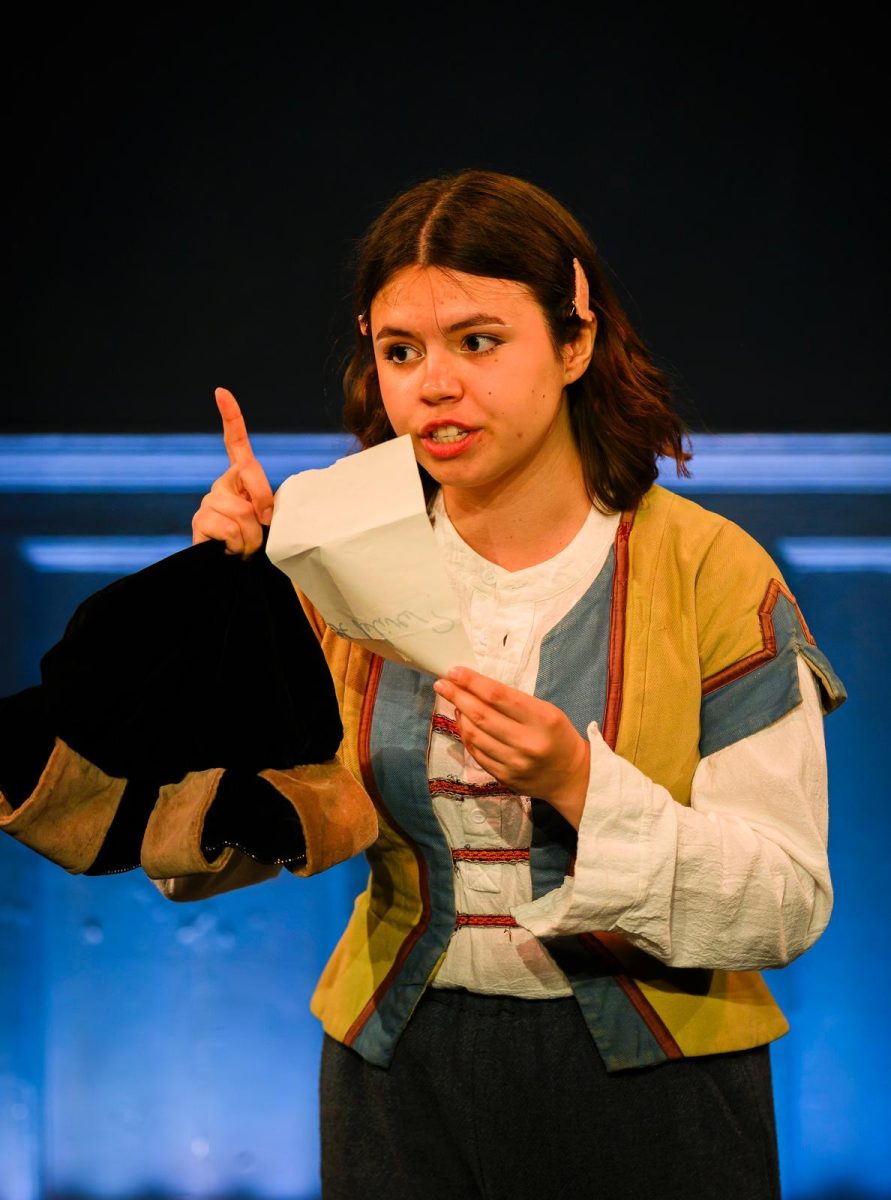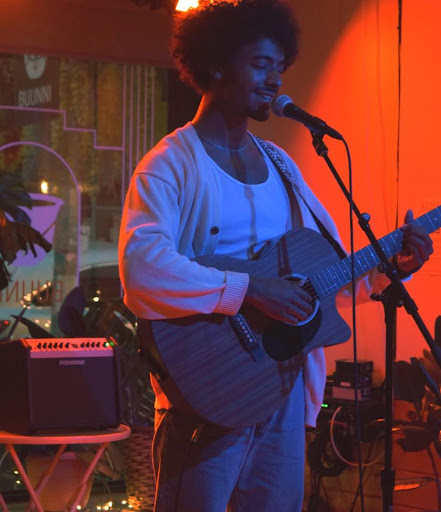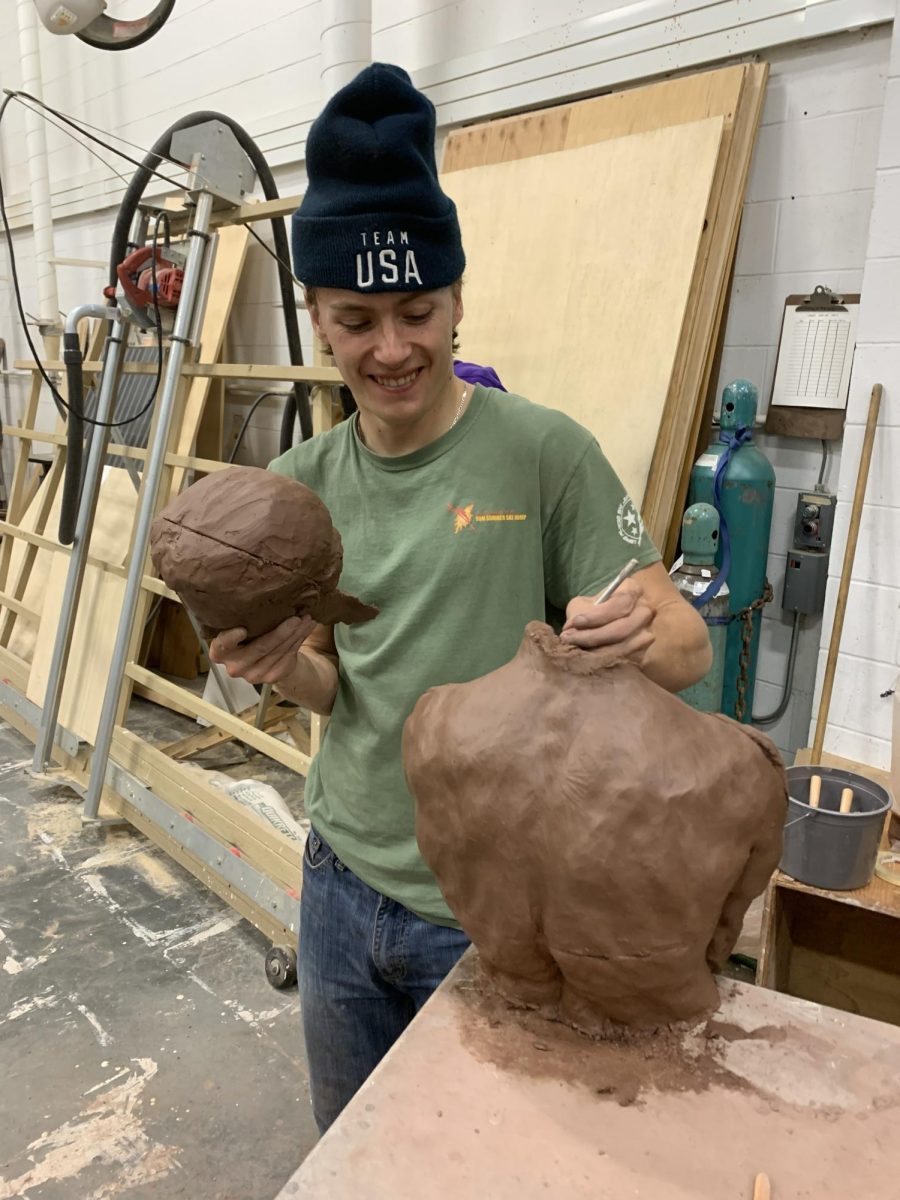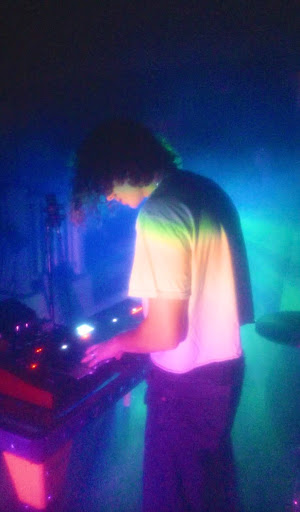
“As a POC director at Williams, I think about my responsibility and what stories I want to put on,” Leo Wang ’27 said. Wang works as a scenic designer and a director for the College’s theater department and Cap & Bells. He made his directorial debut with the Cap & Bells production of Martyna Majok’s Sanctuary City last spring. Wang said that growing up in China and moving to the United States at age 15 for high school inspired him to direct the show, which centers around themes of immigration, voluntary and involuntary migrations, and mobility.
While reflecting on Sanctuary City, Wang described the difficulty of nailing the technical design of the show — specifically, creating compelling transitions between scenes and embodying emotional shifts within scenes. “The biggest challenge for us as a production team was the lighting design and how we achieved cool transitions to tell the stories,” he said. “[The transitions] indicate the repetitiveness of the same struggle, the same frustration that a character faced over time.” The production team employed washers, LED strips, and dimmers to create distinctive transitions conveying the story’s emotional themes.
Wang said that he feels proud of his work on Sanctuary City because it allowed him to highlight political discourse around immigration and spotlight a diverse cast of actors. “I think it’s so refreshing to see a serious and important story that talks to the current political environment at Williams,” he said. “Also, the audience was extremely diverse. I saw a lot of people — not just my friends — who were people of color and who were really interested in the story… And a lot of people showed up [to audition] — a lot of people who are not traditionally represented in Cap & Bells spaces.”
This past summer, Wang continued to hone his directorial skills through a summer intensive with the National Theater Institute. The program recruited three playwrights, five directors (including Wang), and 16 actors. In addition to taking classes during the week, playwrights would begin writing drafts for new plays on Tuesday and turn them over to the directors by Friday. Rehearsals would then take place on Saturday and Sunday, dress and technical rehearsals would occur on Monday, and final performances would happen that same night.
Wang said that the intensity of the program gave him an opportunity to explore different directing styles. “It was a lab for us to experiment,” he said. “I had many different impulses and intuitions I got to experiment with — some of them didn’t work, some of them worked.”
In the program, Wang also learned that a director’s true strength does not only lie in a strong understanding of the play but also in an ability to design a collaborative project. “As a director, my job is not to know everything,” he said. “My job is to know a direction. You need to talk to the group [and] make sure everybody’s on the same page, going in the same direction. You don’t have to know everything because this is a collaborative process where you get to ask actors questions. They can experiment too… Everybody can take part in the story and make the story their own.”
In Wang’s view, the director’s role can be understood in two parts. “As a director, your first job is leadership,” he said. “How do you make people trust you, trust this journey that you’re going on together? And second, your artistic vision. It’s the art of convincing people and using people to achieve your artistic vision.”
At the College, Wang is a theatre and art history and studio combined double major, which he said has influenced his visual directing style. While working as a scenic designer and director, he noted, his first consideration is to identify the intricacies of the space in which the show takes place. Wang pointed to Hansol Jung’s Wolf Play as an example of a visual theatrical project he wants to work on. The play tells the story of a Korean boy who is shipped to an American family on the internet and explores themes of adoption, gender, and race.
“My vision for the play is to set it in a cardboard box, very much like an Amazon box,” he said. “[The play] has a very playful energy to it… I researched photos of kids playing in cardboard boxes, playing pretend, and making cardboard boxes into their houses.”
In addition to his work directing, Wang is also a member of the College’s step group Sankofa.
“Step as a dance form has a lot of history — history about resistance,” he said. “That speaks to me a lot as a director and as an art practitioner as well. It’s an art form about resistance, and it’s an art form that features a lot of people of color. Within that group, as a person of color myself, I feel extremely heard and seen. At a mostly white institution like Williams, it’s a very rare opportunity to find a space that’s as safe as Kofa.”
Wang expressed that he intends to take full advantage of the liberal arts experience for his remaining three years at the College. “A goal is being grossly over-educated on everything possible,” he said. “To receive a liberal arts education is a privilege for directors… Being able to bring knowledge not necessarily about theater into a rehearsal space [and] into conversations with a playwright… It’s a very necessary skill.”













